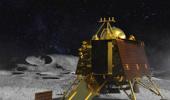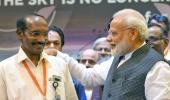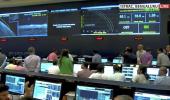'Till date, 90-95 per cent of the mission objectives have been accomplished'
'Future programmes will go as planned'

After the moon landing mishap, K Sivan, chairman, Indian Space Research Organisation spoke to T E Narasimhan/Business Standard of the future and the mood among his scientists.
Edited excerpts:
What went wrong at the last minute?
Of the four descent phases, the first three were successful. During the last phase, the link was lost and communication could not be established. Experts say the communication channel is on between the lander and the orbiter. We are trying to establish the link with the lander and will continue to try for the next 14 days.
How did you locate the lander?
The orbiter has clicked a thermal image of (the) lander but there is no communication yet. We are trying to have contact.
How much of the mission succeeded?
The objective of Chandraayan-2 is science and technology demonstration. The science part, which is the orbiter, has been placed in its intended orbit around the moon. It will help scientists to understand the moon’s evolution and mapping of minerals and water molecules in the polar regions. The orbiter camera will provide high-resolution images. The camera can completely cover the globe of the moon.
The orbiter’s life is now estimated to be around seven years instead of the planned one year, since it has now got extra fuel. So, the science part of the mission is completed 100 per cent.
The technology demonstration part consists of the Vikram and the Pragyan rover, which is inside Vikram. Vikram followed the planned descent trajectory from its orbit of 35 km to close to 2 km above the moon’s surface.
All the systems and sensors of the lander functioned normally until this point, and proved many new technologies, like the variable thrust propulsion technology used in it. The success criteria was defined for each and every phase of the mission. Till date, 90-95 per cent of the mission objectives have been accomplished and will continue contributing to lunar science, notwithstanding the loss of communication with the lander.
How is the mood among scientists?
They (scientists) were down initially, especially emotionally. But, the prime minister’s speech was really a source of strength and inspiration; it was encouraging.
Will Chandrayaan-2 affect future projects?
Future programmes will go as planned. Starting with the Cartosat-3 launch by the end of October, followed by RISAT-2BR1 within a week of the Cartosat launch. ISRO is also working seriously on the flagship Gangayaan programme. By the end of 2020, the first unmanned flight will be launched.











